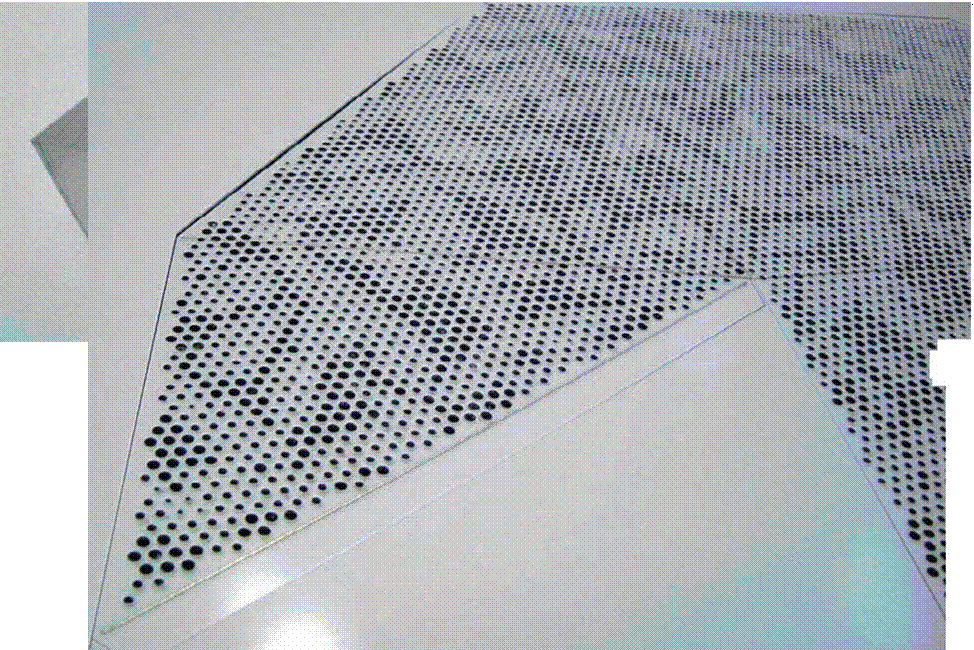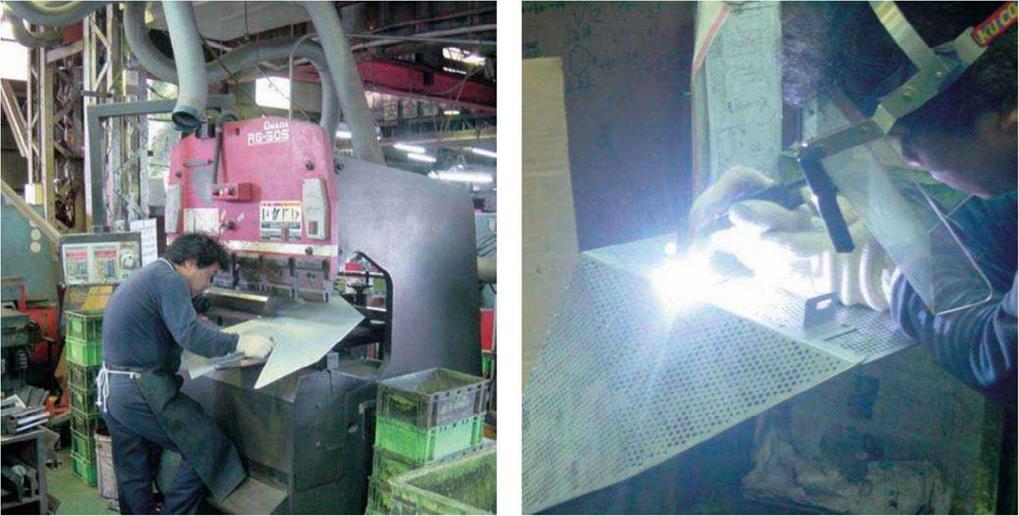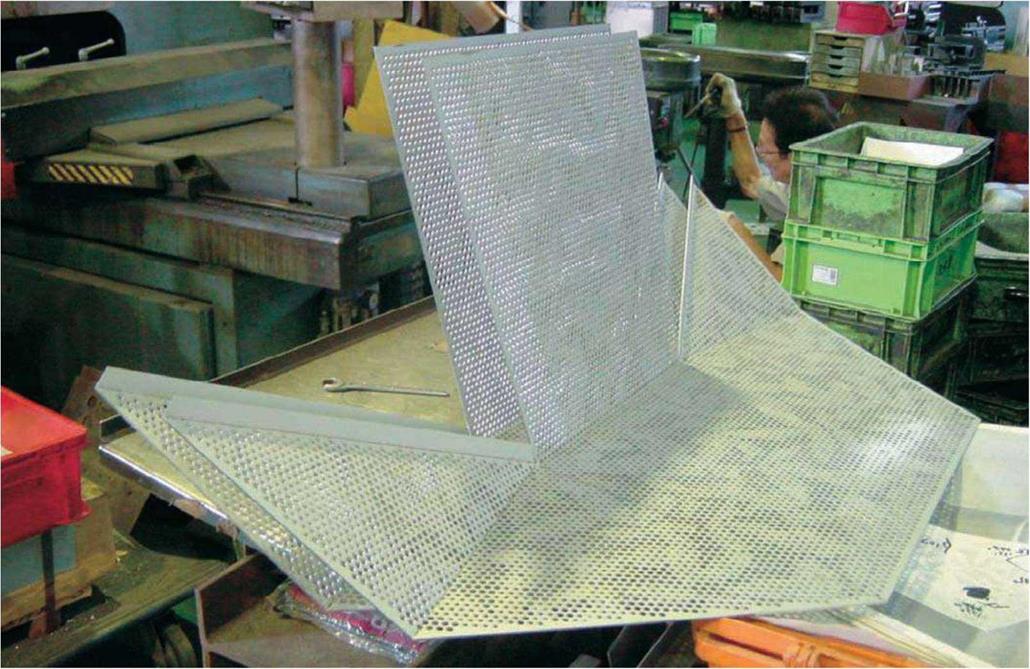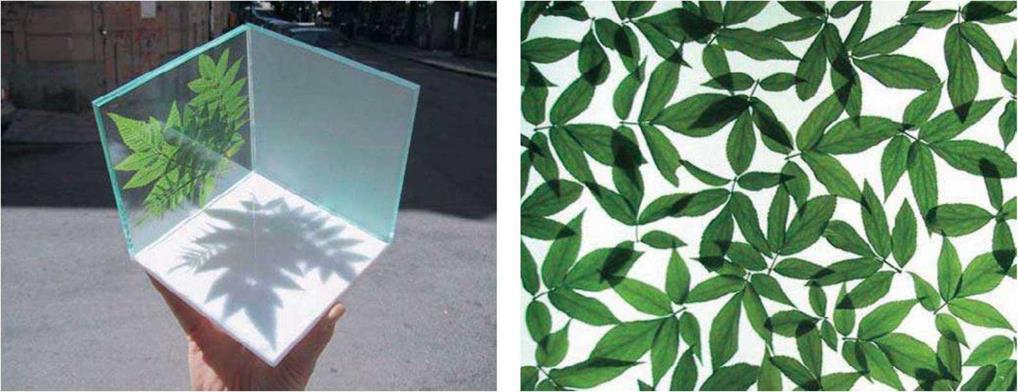 of Claesson Koivisto Rune, speaking about the client who commissioned both the Sfera chair and the building that inspired it. “We found the old tradition of putting bamboo screens in front of a house to screen the sunlight very interesting.”
of Claesson Koivisto Rune, speaking about the client who commissioned both the Sfera chair and the building that inspired it. “We found the old tradition of putting bamboo screens in front of a house to screen the sunlight very interesting.”
The Sfera was designed to be a cafe chair in a “culture house” CKR was designing in Kyoto, Japan. Rune explains, “A culture house means he has exhibitions, restaurants, a shop for design, and a book shop. It’s a privately owned culture house, but it’s open to the public.” The architects Marten Claesson, Eero Koivisto, and Ola Rune found a stunning means to incorporate not only East and West, but also the contrasts of shadow and light, as well as natural materials and modernity into their design. “If you go in a park,” Rune says, “the leaves casts shadows, and it’s very diffuse. It’s not very sharp, because they move all the time. It’s a very beautiful kind of shading.” He continues, “You have the sunlight, but also the shadow at the same time. This is the feeling we wanted to have inside the house.” The architects decided to encase the entire building in a screen inspired by the subtle play of light and pattern that they observed in nature. But instead of bamboo, they chose a much more high-tech material: “We made this leaf pattern in titanium steel,” Rune says. “We punched holes in the steel, and it creates fantastic shadows inside the house. And then at night, it becomes the reverse, and you see the light from inside shining through to the outside.”
When they set out to design an outdoor chair for the building’s cafe, they decided to incorporate the same punched-out leaf pattern. “When no on is sitting on the chair,” Rune points out, “you have the same sensation of the shadowing of the leaves on the ground.”
CKR incorporated yet another aspect of Japanese culture by using an origami-inspired folding technique as a means of fabricating the chair. Working with paper models, they realized that they could take a flat sheet of metal and fold it into the shape of a seat. “It looks like a hexagon from top, like a kimono, when it’s spread out,” Rune says. “It’s really beautiful flat.” In order to produce the chair in quantity, they needed to find a company that could cut holes in metal to create the leaf pattern, and then also fold and weld the metal into the appropriate shape. They turned to a company that makes large ventilation systems. “They’d never made a piece of furniture before,” says Rune, laughing. “They thought, of course, that we were really crazy. They used one machine to cut holes with the laser, and then, they trimmed it down with another machine to make it smooth so you don’t cut yourself when you sit down,” Rune explains. “Then they needed to be able to fold it. They were very clever, the way they do it. It has two triangles that are open, and when you start folding, it comes together at the angles. You fold it and then weld it together, but the two welds are underneath the seat so you never see them.”
|
 Unlike the building screen, which is made of titanium, the chairs are made of stainless steel. Not only is titanium very expensive, but according to Rune, “The titanium was too thin and too weak when you cut out the holes. And, it flexes too much for a chair.” Using stainless steel allowed them to make the chair “quite generous in size. And you sit very comfortably, because the metal makes it flex just enough,” he points out.
Unlike the building screen, which is made of titanium, the chairs are made of stainless steel. Not only is titanium very expensive, but according to Rune, “The titanium was too thin and too weak when you cut out the holes. And, it flexes too much for a chair.” Using stainless steel allowed them to make the chair “quite generous in size. And you sit very comfortably, because the metal makes it flex just enough,” he points out.
The legs of the chair are made of straight tubular steel. “It’s like a normal chassis,” says Rune, “but they needed to follow the top in proportion and have the right angles and such. We tried that ourselves in a one-to-one paper mock-up, so we knew what it would look like.”
Because the chairs are handcrafted in a labor intensive, many – step process, “They can’t do more than two chairs a day,” says Rune. “They become a rare thing, which I kind of like.” He pauses and then adds, “But I’d also like everyone to have one.” In addition to being used in the cafe, the chairs are being sold in the shop at the culture house. “People see the chair and love it and want one,” Rune says, “but then they see the price and pause and have to think about it,” he laughs.
0 The titanium facade of the Sfera building was inspired by both traditional Japanese bamboo screens and the natural play of shadow and light created by leaves dancing on a tree. Hundreds of thousands of holes perforating the metal filter sunlight and create patterns in the building interior. Credit: Ricordi & Sfera
 |
Rune values the opportunity to design a building and furniture that reflect and enhance one another and make a unified artistic statement. “It’s very natural that you do both architecture and design,” he says. “Not for all the projects, but when you have the time. For us, it’s easy, because when we do architecture, we get inspiration to do design, and vice versa. It’s a nice privilege to do both.” However, he points out that there are important contrasts when approaching these different design projects. “Both a building and a chair have a meaning and a function,” Rune feels, “ but the chair is so close to your body, it really needs to be perfect, or else you’ll dislike it. The architecture in this case was quite straightforward. It was so perfect when we got the idea of the metal sheets for the building that it was easier to do the building than the chair,” he continues. “Just to do this chair, took about two years. This chair took longer than the building itself.”
|
74 DESIGN SECRETS: FURNITURE |
|


© Top left: A technician bends the flat piece of precut metal along five fold lines to turn it into the shape of a chair. The stainless steel is not only durable, but has just enough flex to make the chair especially comfortable for sitting.
Credit: Ricordi & Sfera
© Top right: Two welds along the underside of the chair hold the piece together while presenting a seamless side to the user.
In addition, two small plates are welded to the bottom to attach the supporting leg structure. Credit: Ricordi & Sfera
© Above: Two chairs—the output of an entire day’s work—begin to take shape, with the leaf pattern and three of the five required folds in place. Credit: Ricordi & Sfera



